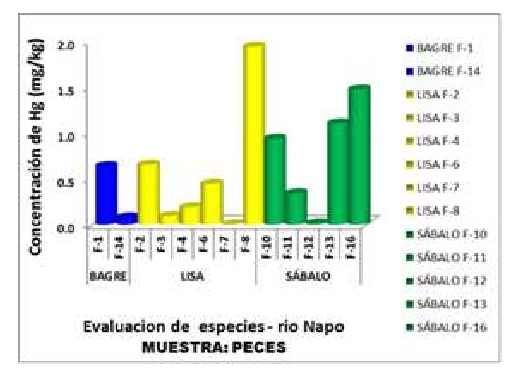Presencia de mercurio en cuenca del rio Napo
DOI:
https://doi.org/10.33017/RevECIPeru2012.0023/Keywords:
Mercury, Sábalos, toxicity, environmental quality, Rio Napo.Abstract
The research focuses on environmental problems caused by improper handling of hazardous materials and wastes from major mining activities in the Amazon, especially the informal gold held in a small scale in the area of the lower Napo [1]. Our purpose is to identify the presence of mercury in the stock from fish consumption and its confirmation in the Napo River, we are also working on prevention to improve the quality of human life while raising awareness of the need for ongoing monitoring of the environment to improve and protect the lives of the residents of Santa Clotilde - Mazan and other exposed areas. The research is applied - descriptive, cross-sectional unexperimental design [2]. The study area is located in the Napo region of Loreto, has four seasons: (Mazan, Nuevo Libertad, San Luis, Santa Clotilde). Was considered to evaluate water and fish,from the river Napo. The quantification of mercury was performed by atomic absorption spectrophotometry with hydride generator [3] Technical Officer: No. AOAC 977.15 [4]. Analysis report that the mercury content in fish is between 0.004 -1.936 mg/kg, and its average value and 0.607mg/kg water is between 0.023-0.027 mg/l, average value being 0.024 mg/l. However, in samples of fish species Lisa and Sabalo, went above the maximum allowable concentration (1.0 mg / kg of mercury) established by the FDA (Food and Drug Administration) of the United States of America [5]. The average monthly consumption of fish at the local level is between 15 to 20 kg of fish per month. Obtaining 10,622.5 µg Hg / g monthly and 127,470 µg Hg /g, year according to the results. The retention of mercury by eating fish is to be determined; however the of Liquid mercury retention from consumption is 0.01% in gastrointestinal tract [6]. If in the gastrointestinal tract is held 0.01% of fish consumption, then according to that obtained 12,747 µg Hg will be retained in the body annually, which exceeds those allowed by the World Health Organization (WHO) of 0.0014 µg of Hg annual, and the content of mercury found in water exceeds the provisions of the National Standards-MINAM (0.0001 mg/L of Hg), even beating the report of the DIGESA. In Report No. 3527-06, 3527-07, 3527-12 (2003) and No. 3935 (2010), whose report is 0.00002 mg / L of Hg, values obtained from sampling points of Santa Clotilde, San Luis and Mazan, in the Napo River basin [7]. Finally, we conclude that there is significant presence of mercury in water and fish from the river Napo. This also confirmed that mercury concentrations in the monitored stations, are higher than the National Environmental Quality Standards and it urges a broader assessment, taking into account other bio-indicators (hair, blood, urine), we confirm the presence of this toxic element in the food chain and ecosystem, it is gives us the opportunity to design, propose and implement monitoring strategies in our Amazon rivers at risk for the development of informal mining activities.


